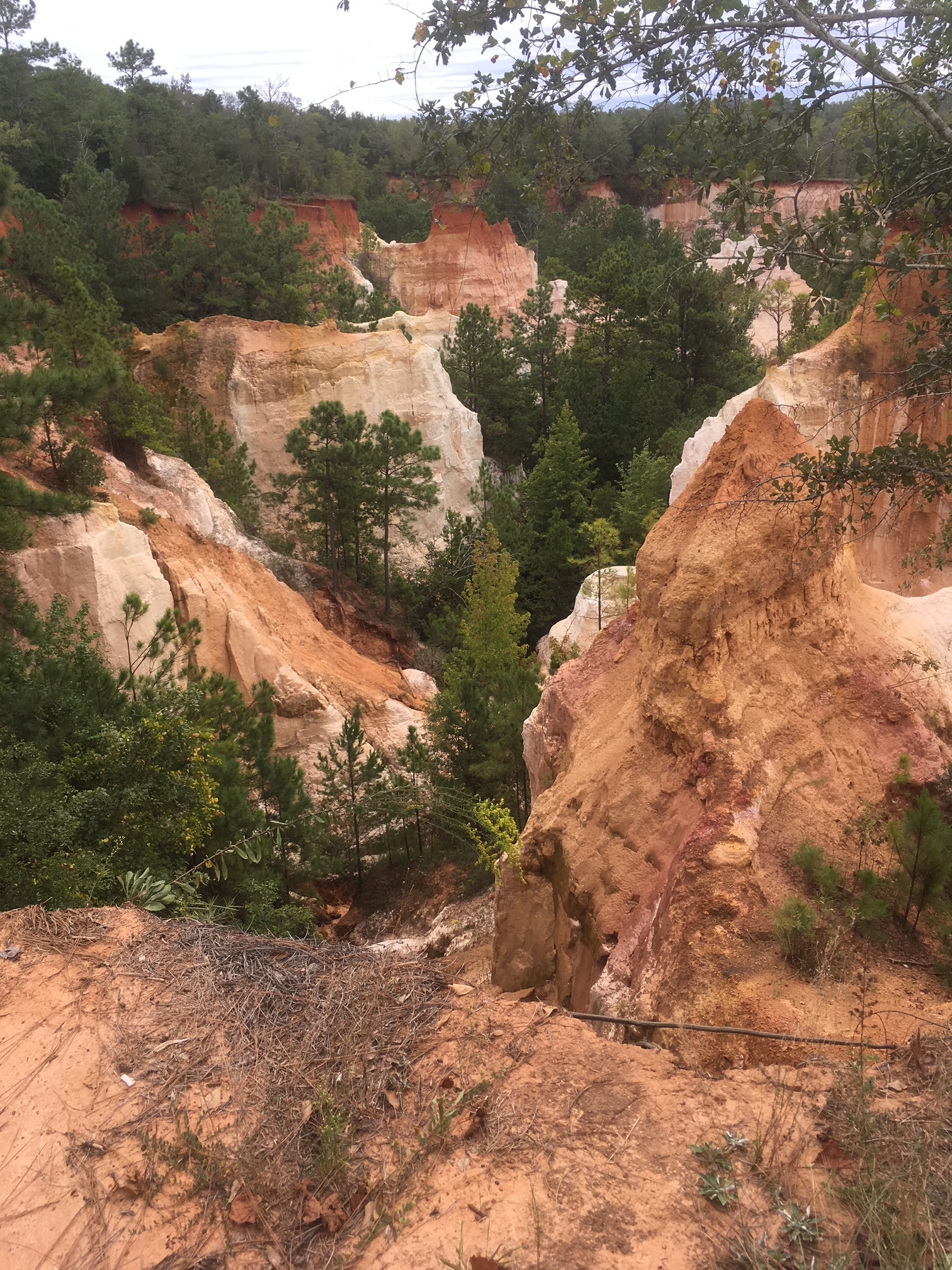This week we talk to geologist Josh Poole about Providence Canyon, also known as the “Little Grand Canyon,” in southwest Georgia. The canyon, however, is not an ancient geological formation. Providence Canyon emerged as a gully resulting from the destructive agricultural practices between Creek Removal in the early 1800s and the U.S. Civil War. We talk to Josh about the history of the canyon, the emergence of the anthropocene, and how geologists think about regional distinctions.
From the edge of the canyon.
Named for a nearby church, Providence Canyon is a 1,000 acre site in Stewart County, Georgia. At its deepest point, it’s over 150 feet down, and it reveals 30 million years of the earth’s history. The layers of the canyon showcase iron-rich topsoil, layers of white clay known as kaolin, and a basin with small running creek. Along the floor of the canyon, hikers can find old abandoned cars.
From the floor of Providence Canyon | Photo via Wikimedia Commons
The canyon calls up questions of the anthropocene — a term used by many to describe the geological age when we can begin to see the impact of humans on the earth’s story. However, as Josh explains, geologists don’t use the term the anthropocene as an official designation. Rather, they recognize that the vast changes wrought by humans will show up in the geologically record for those that come after us, but as for when the anthropocene began, that’s a harder question, geologically speaking.
Fro NPR: "The Geologic History of Earth. Note the timescales. We are currently in the Holocene, which has been warm and moist and a great time to grow human civilization. But the activity of civilization is now pushing the planet into a new epoch which scientists call the Anthropocene."
Ray Troll/Troll Art
As Josh points out, geologists don't talk about the earth in terms of our geopolitical regions. In other words, the earth doesn't care where we draw the Mason-Dixon line or the border between Georgia and Alabama. But what is real is that we're living in the age of the Sixth Mass Extinction, and that's going to effect everyone, regardless of what side of an imaginary line they live on.
We'd like to thank Josh and Amanda for joining us at the Canyon on a Sunday afternoon. We'd also like to thank the Park Rangers at Providence Canyon State Park for their hospitality. You can learn more about the Canyon and plan your visit here.
Mapping Providence:


